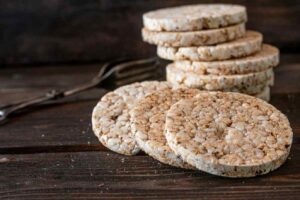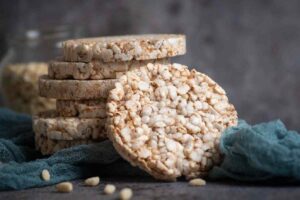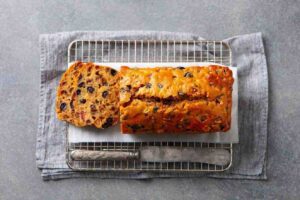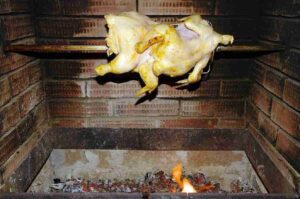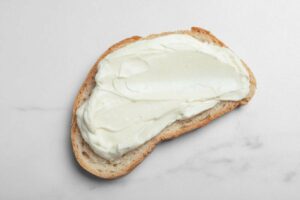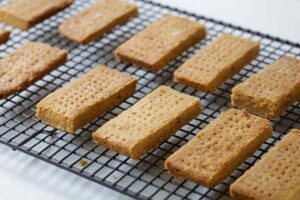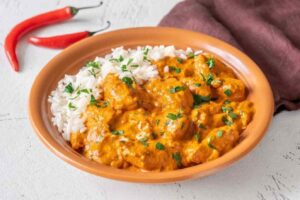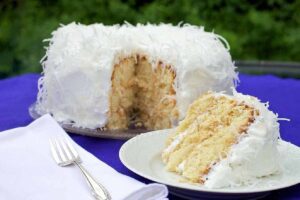Rice Cake has been a staple food in many countries for a long time. Their unique texture and slight sweetness make them a delight to eat. These tasty treats are made from ground rice or rice flour. They have a long past that goes back hundreds of years, and you can find them in different forms all over the world. From Asia to Europe, rice cakes have made a name for themselves as tasty food that can be used in many different ways.
One thing that makes Rice Cakes stand out is its interesting structure. When the grains of rice are pounded or ground, they become soft and chewy, which gives them a certain appeal. Every bite has a pleasant firmness and a satisfyingly smooth end. Rice cakes have a unique texture that stays the same whether they are cooked, baked, or fried. This makes them fun to eat.
In this gastronomic adventure, we will uncover the secrets of rice cake making, diving into both traditional recipes and innovative creations that push the boundaries of flavor and texture. Get ready to be spellbound as we explore the techniques and ingredients that bring these marvelous creations to life.

Table of contents

The History And Origin Of Rice Cake
The origins and history of rice cakes can be traced back to antiquity and can differ between cultures.
Rice cake has a long history and has cultural significance in East Asia. It is thought to have come from China, where rice has been grown for many centuries. As early as the Shang Dynasty (1600–1046 BCE), rice cakes were mentioned in ancient Chinese writings. Originally, rice cakes were offered as an offering to the ancestors and utilized in religious rites and rituals as a symbol of luck and wealth.
The custom of eating rice cakes expanded to nearby nations like Korea and Japan. The rice cakes known as “tteok” have been a staple of traditional festivals like the Lunar New Year and weddings for decades. Korean tteok is available in a variety of colors, sizes, and flavors, including both savory and sweet varieties.
In Japanese cuisine, rice cakes called “mochi” play a significant role. Steamed glutinous rice is frequently pounded into mochi, which has a sticky and chewy feel. It is frequently consumed during the celebrations of the Japanese New Year and has gained popularity as an ingredient in desserts and sweets.
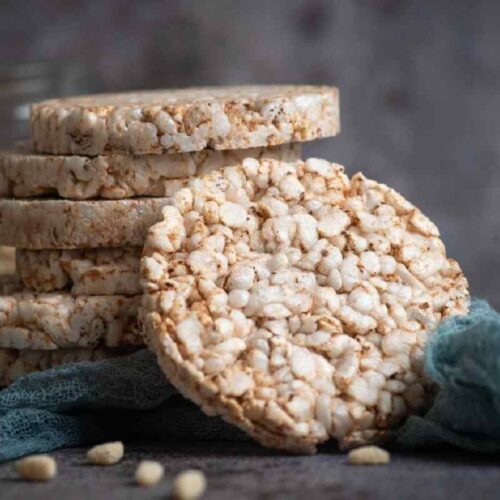
Rice Cake
Equipment
- 1 Rice Cooker A rice cooker is a versatile kitchen appliance used to cook rice. It can be used to steam
- 1 Steamer A steamer is a cooking appliance that uses steam to cook food. It is used to steam the rice and other ingredients for rice cakes
- 1 Mixing bowl A mixing bowl is a container used for combining and mixing the ingredients for rice cakes. It is typically made of glass, ceramic, or stainless steel.
- 1 Wooden Rice Paddle A wooden rice paddle is a traditional tool used for mixing and handling cooked rice. It is gentle on the rice and helps to prevent it from becoming too sticky.
- 1 Rice Cake Mold A rice cake mold is a specially designed mold used to shape and form the rice cakes. It comes in various shapes and sizes, such as round, rectangular, or cylindrical.
- 1 Knife A knife is used to cut and shape the rice cakes once they are cooked. It is important to use a sharp knife to ensure clean and even cuts.
- 1 Food Processor A food processor is an electric kitchen appliance used to blend or grind ingredients. It can be used to process the rice or other ingredients for rice cakes, depending on the recipe.
- 1 Cooking Pot A cooking pot is used to cook the rice and other ingredients for rice cakes. It should be large enough to accommodate the amount of rice and other ingredients being used.
- 1 Sieve or Strainer A sieve or strainer is used to separate the rice from excess water or to strain any ingredients used in the rice cake batter.
- 1 Rolling Pin A rolling pin is used to flatten the rice cake dough or batter. It helps to create an even thickness and shape for the rice cakes.
Ingredients
- 2 cups leftover white rice preferably long-grain or Carolina Gold
- 2 eggs large
- 1 cup finely chopped zucchini
- 3 tbsp chopped mint fresh
- 1/3 cups green onion chopped
- 1 cup sharp white Cheddar used a box cutter with the large hole
- 1 tbsp Salt
- 1/2 tbsp black pepper butter
- 2 tbsp butter
- 2 cups glutinous rice flour
- 1/2 cups water
- 1/2 sugar sugar
- 1 tbsp vanilla extract
- Food coloring
- Toppings of your choice
Instructions
- Mix the glutinous rice flour, water, sugar, and vanilla extract, if you're using it, in a big bowl. Mix well until you have a smooth batter. The texture should be about the same as pancake batter.
- Pour the rice batter into the steamer trays that have been made and spread it out to make a thin layer. Use a spatula or the back of a spoon to smooth out the top.
- While the rice cakes are cooking, you can get the toppings you want ready. Traditional ingredients include red bean paste, coconut shreds, and sesame seeds. Get creative and try out different flavors if you want to.
- When the rice cakes are done, carefully take them out of the steamer and let them cool for a few minutes.
Video
Notes
Exploring the Flavors and Textures of Rice Cakes
Rice Cake is a delicious treat for everyone because they come in a huge variety of flavors and textures. Let’s examine some common varieties of rice cakes in more detail:
1. Garaetteok
The traditional Korean rice cake known as garaetteok is frequently utilized in a variety of meals. Its cylindrical form and chewy texture make it ideal for skewers, soups, and stir-fries. Garaetteok is frequently consumed in Tteokbokki, a hot and sour meal that has become well-known all over the world.
2. Songpyeon
Songpyeon is a type of traditional rice cake popular during the Chuseok harvest festival in Korea. These tiny rice cakes in the shape of crescents are filled with delicious ingredients like sesame seeds, red bean paste, or chestnuts. They are delicately scented because they are cooked over a bed of pine needles.
3. Mochi
Japanese rice cake known as mochi has become well-known throughout the world for its distinctive texture. Mochi, which is made from sticky rice, has a soft and chewy texture. It is frequently eaten as a delicious delicacy that is filled with strawberries, ice cream, or red bean paste. A common addition to many sweets and snacks is mochi.

Flavors and Variations Of Rice Cake
Rice cakes are highly adaptable and can be made to your preferences. You can try the following delectable tastes and variations:
1. Matcha Rice Cake
Rice cakes can be flavored with the vivacious and rustic notes of matcha green tea. Before steaming, only stir in a spoonful of matcha powder to the batter. The outcome is a stunning green rice cake with a distinctive flavor that not only looks delicious.
2. Chocolate-Coated Rice Cake
Why not indulge your sweet tooth by dipping your rice cakes in melted chocolate, all you chocolate lovers out there? Each rice cake should be covered in melted chocolate that has been placed in a microwave-safe bowl. Put them on a tray covered with parchment paper and allow them to cool until the chocolate sets. A chocolate-coated rice cake in Mars Planets Chocolate is a delightful fusion of textures and flavors.
3. Savory Rice Cake with Cheese
Try incorporating grated cheese into the rice cake dough if you like saltier treats. The cheese will melt, forming a tasty, gooey center. When you serve these savory rice cakes as an appetizing appetizer or snack at events, they will quickly go.
The Surprising Benefits of Eating Rice Cakes for Weight Loss
For people trying to lose weight, rice cakes have become increasingly popular as a low-calorie snack option. These thin, crunchy discs composed of puffed rice have a number of unexpected advantages that can help with weight loss efforts. Let’s look at some of the benefits eating rice cakes may have for controlling weight.
1. Low in calories
Rice cakes are naturally low in calories, making them a great option for anyone who is watching their weight. Depending on the type and flavor, a rice cake typically has between 35 and 60 calories. You can lower your overall calorie consumption without compromising satiety by switching your higher-calorie snacks for rice cakes.
2. High in fiber
Rice cakes are surprisingly high in fiber despite having few calories. Fibre facilitates digestion and keeps you feeling filled longer. You’re less likely to suffer hunger pangs and overeat during the day if you eat fiber-rich foods like rice cakes. This may help provide the necessary calorie deficit for weight loss.
3. Low in fat
Compared to other snack foods like chips or cookies, rice cakes are often low in fat. You can lower your fat intake while still meeting your appetite for a crispy treat by selecting rice cakes as a snack. Lessening your fat intake can help you lose weight because fat has more calories per serving than either protein or carbohydrates.

